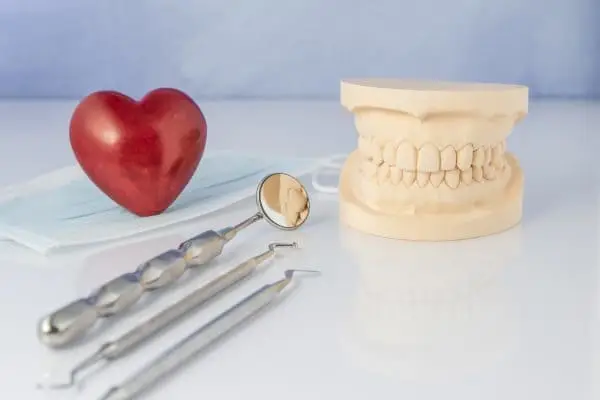Oral health, or the lack thereof, can have a much larger impact on your total health, not just your teeth. For almost two decades, it has been suspected that there is a link between oral disease and heart disease. But, it wasn’t until recently that scientists were certain of the relationship.
Scientists first became aware of the correlation upon discovering that large amounts of oral bacteria is common in the arteries and blood vessels — particularly in the fatty plaque found in their circulatory systems — of victims of heart disease.
Recently, scientists discovered convincing evidence that there is a direct causal relationship between periodontal disease and heart disease, that oral bacteria can severely damage your cardiovascular system.
The same bacteria that attacks your gums, teeth, the periodontal ligament and alveolar bone affects your heart, arteries and blood vessels.
Direct Link Between Periodontal Disease and Heart Disease
Scientists have discovered both a correlative and a causal relationship between periodontal disease and heart disease. People with periodontal disease are twice as likely to have heart disease as those without and odds increase if a person has high cholesterol.
That is a major concern because cardiovascular disease (CVD) affects 85 million Americans while more than 200 million Americans have periodontal disease.
The Bacteria That Causes Your Gums to Swell May Do Same to Arteries and Blood Vessels
The bacteria responsible periodontal disease has the same effect in your arteries and vessels that it has on your gums: it causes swelling.
When a person with periodontal disease chews or brushes their teeth, the bacteria in their mouths enters the blood stream. Upon entering the blood stream, the same bacteria that causes periodontal disease sticks to the fatty plaques in the bloodstream, directly contributing to blockages.
But sticking to the fatty plaques in the bloodstream isn’t all periodontal disease bacteria does once it begins moving through a person’s arteries, vessels and veins. Oral bacteria can cause inflammation, which can result in swollen blood vessels, blood flow reduction and an increase in blood clot risk.
Indicators of Periodontal Disease
There are a number of symptoms associated with periodontal disease. The first indicator that periodontal disease is likely to occur is gingivitis. The symptoms of both gingivitis and periodontal disease are very similar.
According to the American Academy of Periodontology, the most common symptoms of gingivitis and periodontal disease are:
- Red, swollen or tender gums or other pain in the mouth
- Bleeding while brushing, flossing or eating hard food
- Gums that are receding or pulling away from the teeth, causing the teeth to look longer than before
- Loose or separating teeth
- Pus between the gums and teeth
- Sores in the mouth
- Persistent bad breath
- A change in the way the teeth fit together when one bites down
- A change in the fit of partial dentures
Treating and Preventing Periodontal Disease
The most effective and simplest means of preventing periodontal disease are to brush your teeth regularly, not smoke and avoid foods high in sugar and/or corn syrup.
Treating advanced periodontal disease can be accomplished in two ways, nonsurgical and surgical. The nonsurgical treatment for periodontal disease is scaling and root planing (SRP), a removal of the plaque and tartar on your teeth.
The surgical treatment is called periodontal pocket reduction or flap surgery, which involves folding back the gum tissue and removing any infectious bacteria and smooth areas on damaged bone. This allows gum tissue to reattach to the healthy bone.
With respect to periodontal disease, prevention is always a better option than treatment.

